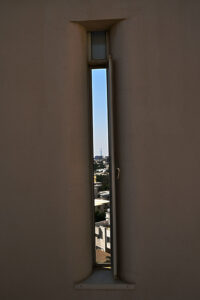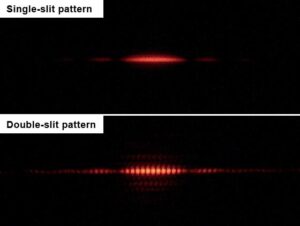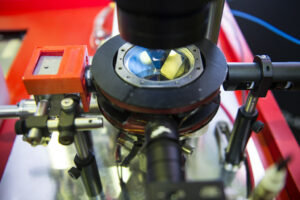Destructive interference of light example is a way to understand how the interference pattern works.
Various destructive interference of light example is there, but we take into consideration the primary factors and ways that help us understand the concept better. Here are a few of those, and let us look into detail.
Light beams
The light beam comes under the category for so many examples. So the light beams nothing but a collection of several numbers of light waves in one single bundle.
The term light beam means the direction of light from a source that acts in one particular direction when emitted. It differs from source to source. The target surface plays a significant role in determining the type of interference the light beams undergo when they hit on a surface.
Let us take an example of several experiments that will explain better about the light beams in one of the destructive interference of light example. When we consider an incident light to fall on a surface, it will either be reflected or refract or sometimes diffract too.
All these conditions of light will mainly depend on the type of the target surface. When the surface is said to be smooth or glass instead, the light will reflect back into the same medium but at a different angle than that of the incident angle.
Also, when the target surface seems to be rough, the light beam will refract and also, if there are curves in the target object, there will be diffraction. So all that we understand from these events is that light beams, when considered a wave, will interfere with each other.
Once they interfere, it will be either constructive or destructive depending upon the angles or the type of wave that is being interfered with. For in sound waves, the interference will occur and show destructive interference if any two waves cancel out on each other.
If the two light waves are said to be located at 180⁰ that are also in two different phases, it eventually will negate each other resulting in amplitude having a smaller value than the individual waves.

Moving Electrons
We clearly need to understand the moving electron concept since there are several ways in which the electron movement has been determined and sued for many other experiments.
How do we bring the moving electrons under destructive interference of light example? Here it is we use simple experiments to show that the moving electron will reveal a destructive interference.
Electron, as we all know, is a particle that is one single entity and thus does not produce any secondary wave patterns all by itself; instead, with the aid of specific equipment, it will be on the whole be terms as a function of the wave.
Now consider a source that produces a series of electrons which, when allowed through a small gap or pinhole, will produce further series of single electrons. So what actually happens when the electrons are allowed through the hole?
See, when the light in the form of the particle is allowed through an outlet that is pretty small, it will pass through it at a particular angle. So based on the incident angle, the outcome will be studied. The result is influenced by the incident angle, too, based on which the wave pattern is decided.
The light particle in the form of the electron will pass through the hole and come out on the other side as several particles at a different location based on the angle. When we connect the entire lying here and there in points, we will get a wave pattern.
The wave pattern obtained after connecting the electron points after the transmission will form a conclusion if they have been constructive or destructive in terms of interference. When the wave pattern obtained is negated due to the trough and crest meeting of the two sets of the wave function is then termed as destructive interference.

Slit Experiments
Experiments like this will showcase the true nature of light, whether it is a particle or a wave, and if it is a wave, what are the possibilities for it to interfere and form a pattern.
Let us consider the single slit experiment, which has only a single slit gap. Here we allow the light wave to pass through the single whole and see the secondary wavefront appearing on the other end of the slit.
So when these light waves enter a hole and leave, they will form a particular wave pattern depending on certain factors that aid it. Say when the wave patterns appear to more and increasing order, then it is said to be a constructive pattern.
The waves forming a pattern will indeed undergo an interference process, and if it does, so there are two chances, either constructive or destructive. When bot the nodes of the wave, namely crest and trough, meet each other respectively at the exact location, then it is termed as constructive interference.
But when the crest of one wave and then the trough of another wave go hand in hand with each other, it is said to be destructive interference. The destructive interference depends on the measure of amplitude too.
When the amplitude of both the waves is said to be indifferent values, they will indeed cancel out on each other since they have different phase differences within. So the resultant wave will have amplitude that is undoubtedly smaller compared to the resultant wave of constructive interference.

Interferometer
The interferometer is one of the best destructive interference of light example as it will not only tell us about the interference pattern but also the type of interference.
Basically, what happens in an interferometer is that one single beam of light is split into two beams and is allowed to propagate into two different paths. So by this way, the two waves will interfere with one another and give a result based on the meeting of the waves.

When the divided light beams are allowed to propagate, they will produce fringes, and this will form a wave pattern in order. When the waves formed cancel out each other instantly, then this will come under destructive interference of light example.
In this experiment, there will be a microscope that will focus on the resultant wave and let us know about the type of interference. When the two nodes of a wave do not match with one another, then it is termed destructive interference.
The interferometer will generally merge the two incoming waves from different sources or by dividing a light beam into two. From this very process, the destructive interference pattern can be observed in order.
Also Read:
- Types of interference of light
- What does the term spectrum mean in light physics
- How are ultraviolet and infrared light different from visible light
- What makes lasers unique as a light source
- How to calculate speed of light
- Is lightning static electricity
- What role does light play in medical diagnostics like endoscopy
- Light density
- What is the dual nature of light
- How does light help us understand distant stars and galaxies
Hi…I am Keerthana Srikumar, currently pursuing Ph.D. in Physics and my area of specialization is nano-science. I completed my Bachelor’s and Master’s from Stella Maris College and Loyola College respectively. I have a keen interest in exploring my research skills and also have the ability to explain Physics topics in a simpler manner. Apart from academics I love to spend my time in music and reading books.
Let’s connect through LinkedIn